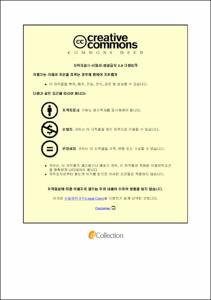순환여과양식시스템 내에서 수온이 감성돔(Acanthopagrus schlegelii) 생산성에 미치는 영향
- Alternative Title
- Effects of water temperature on productivity of black sea bream Acanthopagrus schlegelii in recirculating aquaculture system
- Abstract
- Global warming is predicting rapid changes in ecosystems due to rising temperatures and water temperatures. This necessitates the continuous investigation of fish physiological changes. In aquaculture, water temperature is one of the major determinants of productivity. In addition to fish growth, survival and metabolism, feed intake is directly linked to feed efficiency and feed availability, which affects fish breeding duration. Therefore, the identification of the appropriate water temperature for a particular fish species is an important part of profit and loss in the economic aspects of the aquaculture industry.
In particular, the recirculating aquaculture system (RAS) is advantageous in maintaining the water temperature because the water is circulated and reused. However, maintaining constant water temperature is still an important issue in the RAS and it is especially true in temperate regions such as Korea. Therefore, it is necessary to identify economical water temperature in terms of growth and the cost of maintaining a constant water temperature for certain species.
Black sea bream, Acanthopagrus schlegelii is a high value species in Korea and considered a promising candidate for the RAS because of its wide range of tolerance to water quality. This experiment investigated growth performance and survival of black sea bream in different water temperatures, estimating cost-effective water temperature in the RAS.
Six different water temperatures (20, 23, 26, 29, 32 and 35℃) were examined in individual recirculating systems with the same configuration (a total water volume of 413 L). Each system consisted of three tanks, a moving bead filter, a water sump, a UV sterilizer, and a circulation pump. Each tank received 40 fingerlings of black sea bream (average weight of 15.5 g). Before the experiment began, the fish were acclimated to each experimental water temperature for a week. Fish were cultured for eight weeks and fish were weighed every 4 weeks. The room temperature was maintained at an average of 22℃, and each water temperature was maintained using a cooler or a heater. The power and cost of maintaining the water temperature were also measured for estimating energy consumption.
The result indicated that the water temperature range of 26∼29℃ maximizes the most growth performance, showing the weight gains of 1,887 and 2,038 g, feed efficiencies of 1.41 and 1.48, and daily growth rates of 3.31 and 3.44 at 26 and 29℃. In the meantime, the power consumption and expense showed the lowest value at 26℃. Considering both growth performance and power consumption, the optimum water temperature for culturing black sea bream in the RAS appears to 26℃.
- Issued Date
- 2020
- Awarded Date
- 2020. 2
- Type
- Dissertation
- Publisher
- 부경대학교
- Affiliation
- 부경대학교 대학원
- Department
- 대학원 수산생물학과
- Advisor
- 박정환
- Table Of Contents
- I. 서 론 1
II. 재료 및 방법 4
II-1. 실험어 및 실험조건 4
II-2. 수질 및 성장 측정 7
II-3. 수온 유지 전력량 및 비용 측정 9
II-4. 통계 처리 9
III. 결 과 10
III-1. 수질 환경 10
III-2. 어류 성장 12
III-3. 수온 유지 전력량 및 비용 23
IV. 고 찰 26
요약 32
감사의 글 34
참고문헌 37
- Degree
- Master
- Files in This Item:
-
-
Download
 순환여과양식시스템 내에서 수온이 감성돔(Acanthopagrus schlegelii) 생산성에 미치는 영향.pdf
기타 데이터 / 767.66 kB / Adobe PDF
순환여과양식시스템 내에서 수온이 감성돔(Acanthopagrus schlegelii) 생산성에 미치는 영향.pdf
기타 데이터 / 767.66 kB / Adobe PDF
-
Items in Repository are protected by copyright, with all rights reserved, unless otherwise indicated.